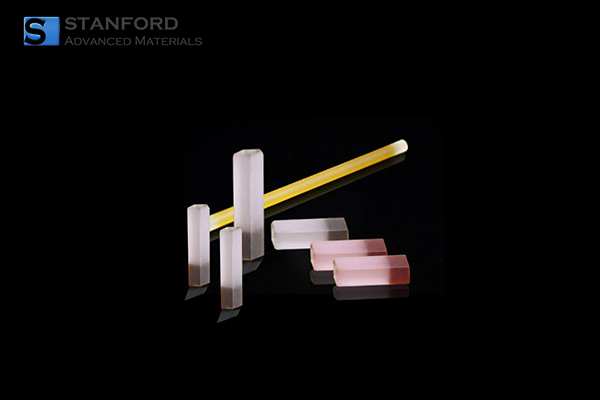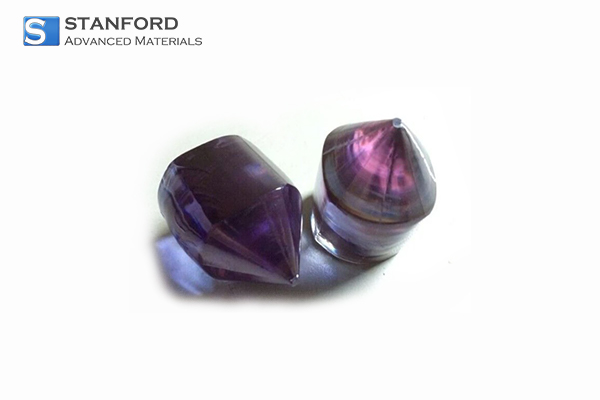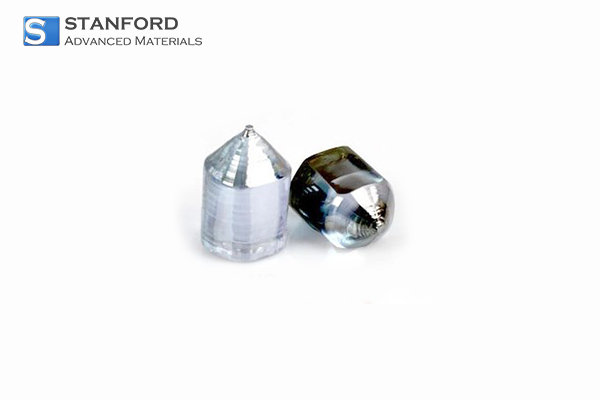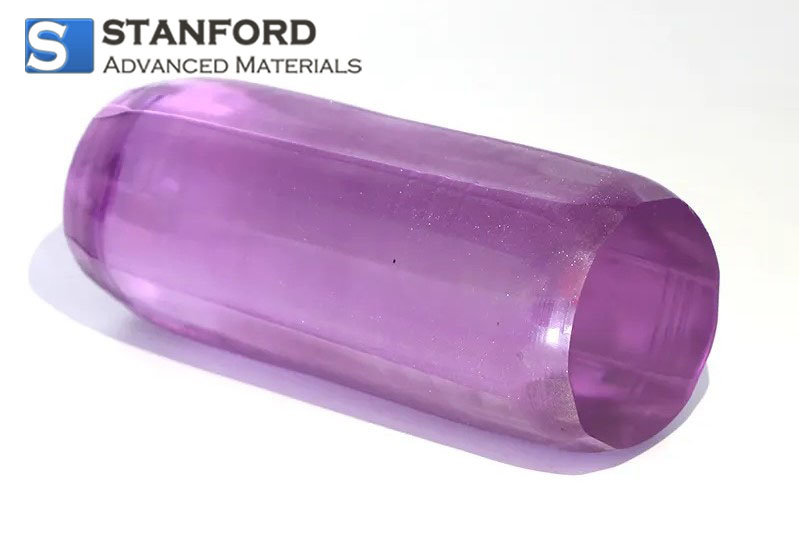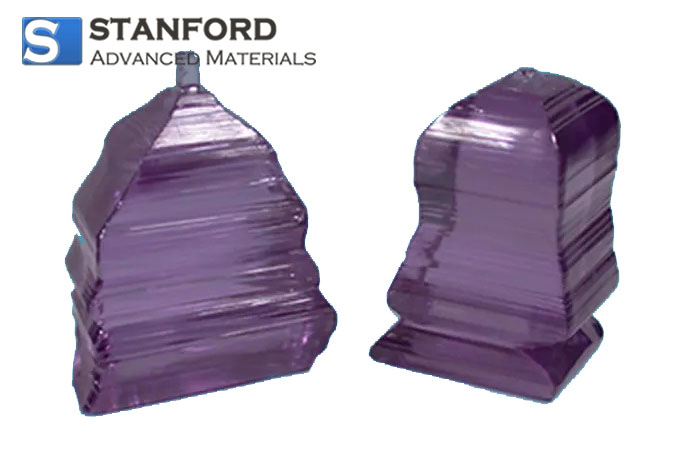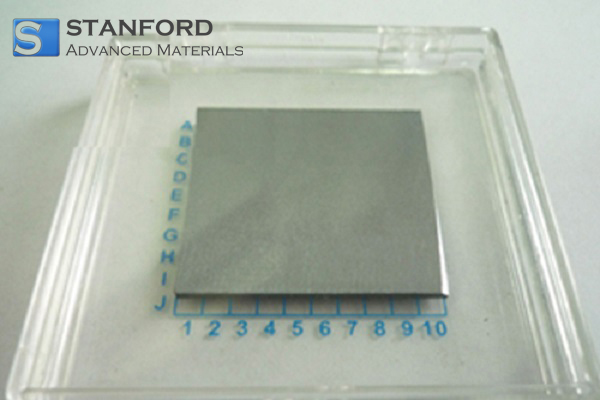SECTION 1. IDENTIFICATION
Product Name: Zinc Cadmium Telluride
CAS #: 303114-50-3
Relevant identified uses of the substance: Scientific research and development
Supplier details:
Stanford Advanced Materials
E-mail: sales@samaterials.com
Tel: (949) 407-8904
Address: 23661 Birtcher Dr., Lake Forest, CA 92630 U.S.A.
SECTION 2. HAZARDS IDENTIFICATION
2.1 Classification of the substance or mixture
GHS Classification in accordance with 29 CFR 1910 (OSHA HCS)
Acute toxicity, Oral (Category 4), H302
Acute toxicity, Inhalation (Category 3), H331
Acute toxicity, Dermal (Category 4), H312
Acute aquatic toxicity (Category 1), H400
Chronic aquatic toxicity (Category 1), H410
2.2 GHS Label elements, including precautionary statements
Pictogram
Signal word Danger
Hazard statement(s)
H302 + H312 Harmful if swallowed or in contact with skin
H331 Toxic if inhaled.
H410 Very toxic to aquatic life with long lasting effects.
Precautionary statement(s)P261 Avoid breathing dust/ fume/ gas/ mist/ Vapors/ spray.
P264 Wash skin thoroughly after handling.
P270 Do not eat, drink or smoke when using this product.
P271 Use only outdoors or in a well-ventilated area.
P273 Avoid release to the environment.
P280 Wear protective gloves/ protective clothing.
P302 + P352 IF ON SKIN: Wash with plenty of soap and water.
P304 + P340 IF INHALED: Remove victim to fresh air and keep at rest in a position comfortable for
breathing.
P311 Call a POISON CENTER or doctor/ physician.
P322 Specific measures (see supplemental first aid instructions on this label).
P330 Rinse mouth.
P363 Wash contaminated clothing before reuse.
P391 Collect spillage.
P403 + P233 Store in a well-ventilated place. Keep container tightly closed.
P405 Store locked up.
P501 Dispose of contents/ container to an approved waste disposal plant.
2.3 Hazards not otherwise classified (HNOC) or not covered by GHS - none
SECTION 3. COMPOSITION/INFORMATION ON INGREDIENTS
3.2 Mixtures
Synonyms : CZT
Formula : Cd0.9Zn0.1Te
Molecular weight : 235.31 g/mol
Hazardous components
Component
Cadmium telluride
CAS-No. 1306-25-8
EC-No. 215-149-9
Index-No. 048-001-00-5
Classification
Acute Tox. 4; Aquatic Acute 1; Aquatic Chronic 1; H302 + H312 + H332, H410
Concentration
>= 90 - <= 100%
Component
Zinc telluride
CAS-No. 1315-11-3
EC-No. 215-260-2
Classification
Acute Tox. 2; H330
Concentration
>= 20 - < 30 %
SECTION 4. FIRST AID MEASURES
4.1 Description of first aid measuresGeneral advice
Consult a physician. Show this safety data sheet to the doctor in attendance.Move out of dangerous
area.
If inhaled
If breathed in, move person into fresh air. If not breathing, give artificial respiration. Consult a
physician.
In case of skin contact
Wash off with soap and plenty of water. Take victim immediately to hospital. Consult a physician.
In case of eye contact
Flush eyes with water as a precaution.
If swallowed
Never give anything by mouth to an unconscious person. Rinse mouth with water. Consult a physician.
4.2 Most important symptoms and effects, both acute and delayed
The most important known symptoms and effects are described in the labelling (see section 2.2)
and/or in section 11
4.3 Indication of any immediate medical attention and special treatment needed
No data available
SECTION 5. FIREFIGHTING MEASURES
5.1 Extinguishing media
Suitable extinguishing media
Use water spray, alcohol-resistant foam, dry chemical or carbon dioxide.
5.2 Special hazards arising from the substance or mixture
Cadmium/cadmium oxides, Zinc/zinc oxides, Tellurium oxides
5.3 Advice for firefighters
Wear self-contained breathing apparatus for firefighting if necessary.
5.4 Further information
No data available
SECTION 6. ACCIDENTAL RELEASE MEASURES
6.1 Personal precautions, protective equipment and emergency procedures
Wear respiratory protection. Avoid dust formation. Avoid breathing Vapors, mist or gas. Ensure
adequate ventilation. Evacuate personnel to safe areas. Avoid breathing dust.
For personal protection see section 8.
6.2 Environmental precautions
Prevent further leakage or spillage if safe to do so. Do not let product enter drains. Discharge into the
environment must be avoided.
6.3 Methods and materials for containment and cleaning upPick up and arrange disposal without creating dust. Sweep up and shovel. Keep in suitable, closed
containers for disposal.
6.4 Reference to other sections
For disposal see section 13.
SECTION 7. HANDLING AND STORAGE
7.1 Precautions for safe handling
Avoid contact with skin and eyes. Avoid formation of dust and aerosols. Provide appropriate exhaust
ventilation at places where dust is formed. For precautions see section 2.2.
7.2 Conditions for safe storage, including any incompatibilities
Keep container tightly closed in a dry and well-ventilated place.
7.3 Specific end use(s)
Apart from the uses mentioned in section 1.2 no other specific uses are stipulated
SECTION 8. EXPOSURE CONTROLS/PERSONAL PROTECTION
8.1 Control parameters
Components with workplace control parameters
Component CAS-No.
Cadmium telluride 1306-25-8
Value Control parameters Basis
TWA 0.100000 mg/m3 USA. Occupational Exposure Limits (OSHA) - Table Z-1 Limits for Air
Contaminants
TWA 0.010000 mg/m3 USA. ACGIH Threshold Limit Values (TLV)
Remarks
Kidney damage
Substances for which there is a Biological Exposure Index or Indices (see BEI® section)
Suspected human carcinogen varies
TWA 0.002000 mg/m3 USA. ACGIH Threshold Limit Values
(TLV)
Kidney damage
Substances for which there is a Biological Exposure Index or Indices (see BEI® section)
Suspected human carcinogen varies
TWA 0.100000 mg/m3 USA. ACGIH Threshold Limit Values (TLV)
Halitosis
PEL 0.005000 mg/m3 OSHA Specifically Regulated Chemicals/Carcinogens
1910.1027
This standard applies to all occupational exposures to cadmium and cadmium compounds, in all
forms, and in all industries covered by the Occupational Safety and Health Act, except the
construction- related industries, which are covered under 29 CFR 1926.63.
OSHA specifically regulated carcinogen
Potential Occupational Carcinogen
See Appendix A
Potential Occupational Carcinogen
See Appendix A
TWA 0.100000 mg/m3 USA. NIOSH Recommended Exposure Limits
PEL 0.005000 mg/m3 OSHA Specifically Regulated Chemicals/Carcinogens1910.1027
This standard applies to all occupational exposures to cadmium and cadmium compounds, in all
forms, and in all industries covered by the Occupational Safety and Health Act, except the
construction- related industries, which are covered under 29 CFR 1926.63.
OSHA specifically regulated carcinogen
Potential Occupational Carcinogen
See Appendix A
TWA 0.100000 mg/m3 USA. Occupational Exposure Limits (OSHA) - Table Z-1 Limits for Air
Contaminants
TWA 0.100000 mg/m3 USA. ACGIH Threshold Limit Values (TLV)
Halitosis
TWA 0.100000 mg/m3 USA. NIOSH Recommended Exposure Limits
TWA 0.1 mg/m3 USA. Occupational Exposure Limits (OSHA) - Table Z-1 Limits for Air
Contaminants
TWA 0.1 mg/m3 USA. ACGIH Threshold Limit Values (TLV)
Halitosis
TWA 0.1 mg/m3 USA. NIOSH Recommended Exposure Limits
Biological occupational exposure limits
Component CAS-No.
Cadmium telluride 1306-25-8
Parameters Value Biological specimen Basis
cadmium 5.0000 µg/l In blood ACGIH - Biological Exposure Indices (BEI)
Remarks
Not critical
cadmium 0.0050 mg/g Urine ACGIH - Biological Exposure Indices (BEI)
Not critical
cadmium 5 µg/l In blood ACGIH - Biological Exposure Indices (BEI)
Not critical
cadmium 5µg/g creatinine Urine ACGIH - Biological Exposure Indices (BEI)
Not critical
8.2 Exposure controls
Appropriate engineering controls
Avoid contact with skin, eyes and clothing. Wash hands before breaks and immediately after handling
the product.
Personal protective equipment
Eye/face protection
Face shield and safety glasses Use equipment for eye protection tested and approved under
appropriate government standards such as NIOSH (US) or EN 166(EU).
Skin protection
Handle with gloves. Gloves must be inspected prior to use. Use proper glove removal technique
(without touching glove's outer surface) to avoid skin contact with this product. Dispose of
contaminated gloves after use in accordance with applicable laws and good laboratory practices.
Wash and dry hands.
Body Protection
Complete suit protecting against chemicals, The type of protective equipment must be selected
according to the concentration and amount of the dangerous substance at the specific workplace.
Respiratory protection
Where risk assessment shows air-purifying respirators are appropriate use a full-face particlerespirator type N99 (US) or type P2 (EN 143) respirator cartridges as a backup to engineering
controls. If the respirator is the sole means of protection, use a full-face supplied air respirator. Use
respirators and components tested and approved under appropriate government standards such as
NIOSH (US) or CEN (EU).
Control of environmental exposure
Prevent further leakage or spillage if safe to do so. Do not let product enter drains. Discharge into the
environment must be avoided.
SECTION 9. PHYSICAL AND CHEMICAL PROPERTIES
a) Appearance: Form: solid
b) Odor: No data available
c) Odor Threshold: No data available
d) pH: No data available
e) Melting point/freezing point: Melting point/range: 1,100 - 1,500 °C (2,012 - 2,732 °F)
f) Initial boiling point and boiling range: No data available
g) Flash point: No data available
h) Evaporation rate: No data available
i) Flammability (solid, gas): No data available
j) Upper/lower flammability or explosive limits: No data available
k) Vapor pressure: No data available
l) Vapor density: No data available
m) Relative density: No data available
n) Water solubility: No data available
o) Partition coefficient: n-octanol/water: No data available
p) Auto-ignition temperature: No data available
q) Decomposition temperature: No data available
r) Viscosity: No data available
s) Explosive properties: No data available
t) Oxidizing properties: No data available
9.2 Other safety information
No data available
SECTION 10. STABILITY AND REACTIVITY
10.1 Reactivity
No data available
10.2 Chemical stability
Stable under recommended storage conditions.
10.3 Possibility of hazardous reactions
No data available
10.4 Conditions to avoid
No data available
10.5 Incompatible materials
Strong oxidizing agents, Strong acids10.6 Hazardous decomposition products
Other decomposition products - No data available
In the event of fire: see section 5
SECTION 11. TOXICOLOGICAL INFORMATION
11.1 Information on toxicological effects
Acute toxicity
No data available
Inhalation: No data available
Dermal: No data available
No data available
Skin corrosion/irritation
No data available
Serious eye damage/eye irritation
No data available
Respiratory or skin sensitisation
No data available
Germ cell mutagenicity
No data available
Carcinogenicity
IARC: 1 - Group 1: Carcinogenic to humans (Cadmium telluride)
NTP: Known to be human carcinogenThe reference note has been added by TD based on the
background information of the NTP. (Cadmium telluride)
OSHA: OSHA specifically regulated carcinogen (Cadmium telluride)
Reproductive toxicity
No data available
No data available
Specific target organ toxicity - single exposure
No data available
Specific target organ toxicity - repeated exposure
No data available
Aspiration hazard
No data available
Additional Information
RTECS: Not available
Acute inhalation exposure to cadmium fumes may cause "metal fume fever" with flu-like symptoms ofweakness, fever, headache, chills, nausea, vomiting, dizziness, sweating, muscular pain, cough and
difficulty breathing. Acute
pulmonary edema may develop within 24 hours and reaches a maximum by three days.The first
chronic effect of exposure to cadmium is generally kidney damage, manifested by excretion of
excessive protein in the urine, followed by anemia, teeth discoloration and loss of smell. Cadmium
also is believed to cause pulmonary emphysema and bone disease., To the best of our knowledge,
the chemical, physical, and toxicological properties have not been thoroughly investigated.
SECTION 12. ECOLOGICAL INFORMATION
12.1 Toxicity
No data available
12.2 Persistence and degradability
No data available
12.3 Bioaccumulative potential
No data available
12.4 Mobility in soil
No data available
12.5 Results of PBT and vPvB assessment
PBT/vPvB assessment not available as chemical safety assessment not required/not conducted
12.6 Other adverse effects
An environmental hazard cannot be excluded in the event of unprofessional handling or disposal. Very
toxic to aquatic life with long lasting effects.
SECTION 13. DISPOSAL CONSIDERATIONS
13.1 Waste treatment methods
Product
Offer surplus and non-recyclable solutions to a licensed disposal company. Contact a licensed
professional waste disposal service to dispose of this material. Dissolve or mix the material with a
combustible solvent and burn in a chemical incinerator equipped with an afterburner and scrubber.
Contaminated packaging
Dispose of as unused product.
SECTION 14. TRANSPORT INFORMATION
DOT (US)
UN number: 2570 Class: 6.1 Packing group: III
Proper shipping name: Cadmium compounds (Cadmium telluride, Zinc telluride) Reportable Quantity
(RQ):
Poison Inhalation Hazard: NoIMDG
UN number: 2570 Class: 6.1 Packing group: III EMS-No: F-A, S-A Proper shipping name: CADMIUM
COMPOUND (Cadmium telluride, Zinc telluride)
Marine pollutant:yes
IATA
UN number: 2570 Class: 6.1 Packing group: III
Proper shipping name: Cadmium compound (Cadmium telluride, Zinc telluride)
SECTION 15. REGULATORY INFORMATION
SARA 302 Components
No chemicals in this material are subject to the reporting requirements of SARA Title III, Section 302.
SARA 313 Components
The following components are subject to reporting levels established by SARA Title III, Section 313:
Cadmium telluride
CAS-No.
1306-25-8
Revision Date
2007-07-01
Zinc telluride 1315-11-3 2007-07-01
SARA 311/312 Hazards
Acute Health Hazard, Chronic Health Hazard
Massachusetts Right To Know Components
No components are subject to the Massachusetts Right to Know Act.
Pennsylvania Right To Know Components
Cadmium telluride
CAS-No.
1306-25-8
Revision Date
2007-07-01
Zinc telluride 1315-11-3 2007-07-01
New Jersey Right To Know Components
Cadmium telluride
CAS-No.
1306-25-8
Revision Date
2007-07-01Zinc telluride 1315-11-3 2007-07-01
California Prop. 65 Components
WARNING! This product contains a chemical known to the
State of California to cause cancer. Cadmium telluride
CAS-No.
1306-25-8
Revision Date
2007-09-28
SECTION 16. OTHER INFORMATION
Safety Data Sheet according to Regulation (EC) No. 1907/2006 (REACH). The above information is
believed to be correct but does not purport to be all inclusive and shall be used only as a guide. The
information in this document is based on the present state of our knowledge and is applicable to the
product with regard to appropriate safety precautions. It does not represent any guarantee of the
properties of the product.


